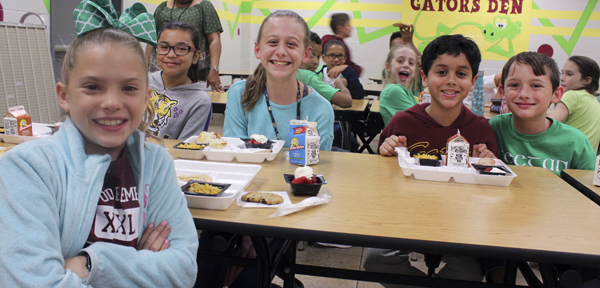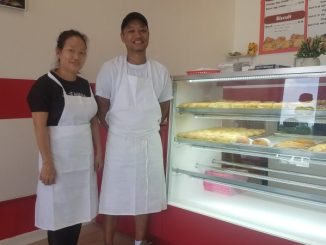
When Hahnville High School gets to taste Satellite Center student Tyler Becnel’s culinary creation – BBQ Pulled Pork Stuffed Sweet Potato – in fall, it’s likely to be a rave dish with these student foodies’ more sophisticated taste buds.
It’s a gastronomical marvel that Teresa Brown, director of child nutrition with St. Charles Parish Public Schools, said resulted from the system’s more interactive nutrition program.
What’s going on today’s plate results from far greater student input than the classic cafeteria menu.Student focus groups have increasing say on what they want to eat – and don’t want to eat – and are gradually changing the menu.
“They provide good feedback on what’s working or needs improvement,” Brown said.
Majority rules on whether their suggestions happen because it takes at least 50 percent of the students to sign off on the food or dish before it reaches the menu, Brown said. It poses more challenges for the system’s nutritionists to match the food idea with federal regulations requiring less salt, sugar and fat in school menus, as well as ensuring it meets budget.
“You have to make it fun for the kids,” Brown said.Becnel’s grand prize winning BBQ dish was developed in the culinary class at the Satellite Center. It will make its debut at HHS, where he’s a student, and then also be served at Destrehan High School.
Last Wednesday, the HHS menu included two new items – Carnita Street Tacos, a sweet and spicy coleslaw, and pork sliders with a Bookwood Carnita style pork. Both items came from a student focus group.
“It’s a premium product,” Brown said of these additions that are aimed at boosting taste over salt. “We’ve been trying to upgrade their center of the plate (entre’) … trying food items such as what mom cooks at home.”
The menu is clearly evolving, but she said they’re working harder to ensure the students have more say.
Increasingly surveying students for preferences, Brown said gumbo day is the top day among them.
It’s turkey and sausage gumbo with potato salad and a garden salad, which is closely followed in popularity by hamburgers with seasoned potato wedges and fruit. Chicken tenders with Fettucini Alfredo and green beans comes in at a very close third place.
The baked wedge, with its tasty crispy exterior, represents another important change.
“We don’t fry a single thing in schools anymore,” Brown said. “We found a nice seasoned potato wedge that they love. It’s baked and has the crispy outside.”
Although not a high-ranking favorite, a surprisingly desired dish is shepherd’s pie. Brown witnessed HHS students encouraging friends to get it because they loved it. While it wasn’t a dish they readily recognized, their taste buds ruled.
School dishes are also mostly cooked from scratch and using less processed foods to ensure healthier standards are met.
It means re-training taste buds, as well as finding appealing replacements and recipes – otherwise a student may reject lunch and go hungry all day.
Brown said it takes creativity to find them and at least once it went horribly wrong.
In the federal push to serve healthier foods in schools came a decidedly major bomb among students – whole grain biscuits.
“We went through three whole grain biscuits in one year and it didn’t work,” Brown said. “Biscuits are a very important part of our food culture and we had to make the change.”
Regardless of federal guidelines, students took one bite and tossed them in the garbage. So many of them ended up trashed that in 2015 Brown lobbied on Capitol Hill for a waiver on the requirement to serve them. It came in May of last year and the beloved flour biscuit only recently made its comeback.
“We couldn’t get over the biscuit hurdle,” she said. “I had to work very hard to do that, but we got it.”
As important, the biscuit rebellion affirmed the menu needs to be student tested and approved.
It also was decided students needed to know more about food.Last year, the NEXT Program (nutrition, education and connection tour) was piloted and rolled out this year.
Elementary students, mostly second graders, do a kitchen tour as part of their enrichment time. They do a food activity where they might make a fruit pizza and get to eat it, as well as get an educational nutrition lesson.
The Satellite Center’s culinary cook-off provides new food items that they would like to eat.
Their challenge is developing a meal that is healthy yet cost effective and by all means tasty, Brown said. Chef Patrick Phelan works with them.
“We judge their plates and the winning recipe has their menu featured in the school menu in the fall of the next school year at the high schools,” she said. Becnel won a $200 scholarship from the St. Charles Parish School Nutrition Association for his winning dish. Last year’s winner was tomato basil soup.
Student input is why the center has a new coffee kiosk with breakfast a la carte items.
Brown added, “We want to be one team … using the cafeteria as a lab where they can eat and learn.”




Be the first to comment